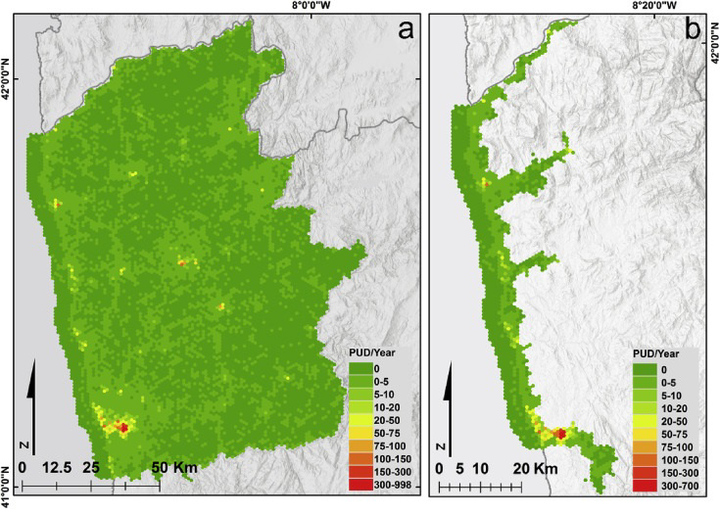Linking Modelling and Empirical Data to Assess Recreation Services Provided by Coastal Habitats: The Case of NW Portugal

Abstract
In recent years, NW Portugal, particularly the city of Porto, has increasingly attracted tourists, thus emphasising the economic potential of the sector. This region is also of high ecological relevance, hosting a Marine Protected Area and several estuarine and coastal protected areas classified by the EU Natura 2000 programme. Therefore, there is a need to combine human activities and deliver societal benefits without compromising the ecosystem health and the maintenance of ecosystem services (ES). Here we give a novel local/regional assessment of the recreation and tourism magnitude in relation to ecosystem services using NW Portugal as a case study, including major estuarine habitats in the Douro estuary. We combined InVEST (Integrated Valuation of Ecosystem Services and Tradeoffs) model predictions with available tourism data to interrogate, analyse and ensure that the Tourism Recreation model produced outputs maps of Photo-User-Day estimates. As a proxy for tourist visits, we used the geotagged photographs posted to the website Flickr™. The area being modelled was decided based on the location of natural habitats with a high attractiveness to visitors. We applied the Recreation model to different scales to compare the Photo-User-Day estimates over the local and regional scales of the study area to give a major focus for recreation associated with the Porto city and with the Douro estuary. This work shows the high value of the need for studies where ES are assessed at a local/regional scale and not based on extrapolations from general ES estimates, under the incorrect assumption that habitats worldwide are similar.